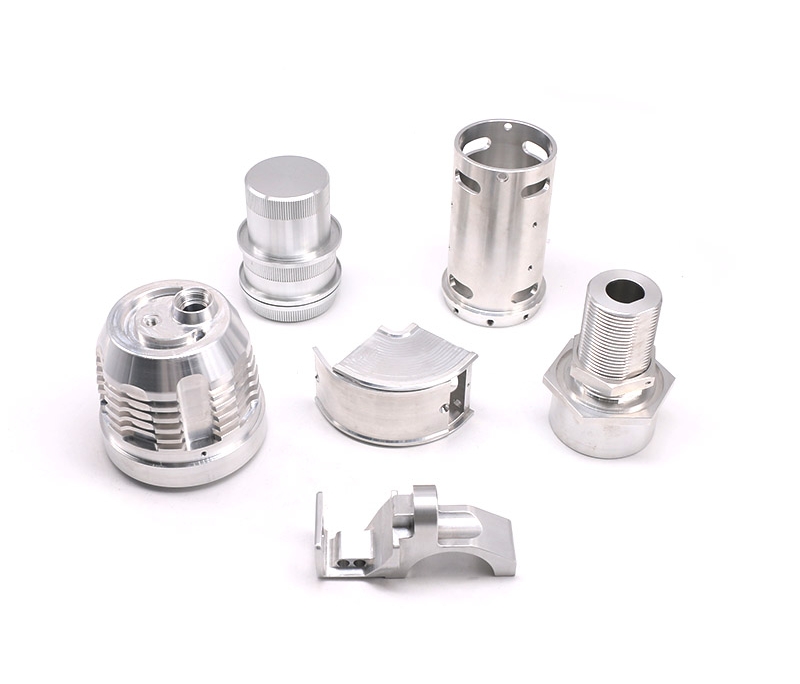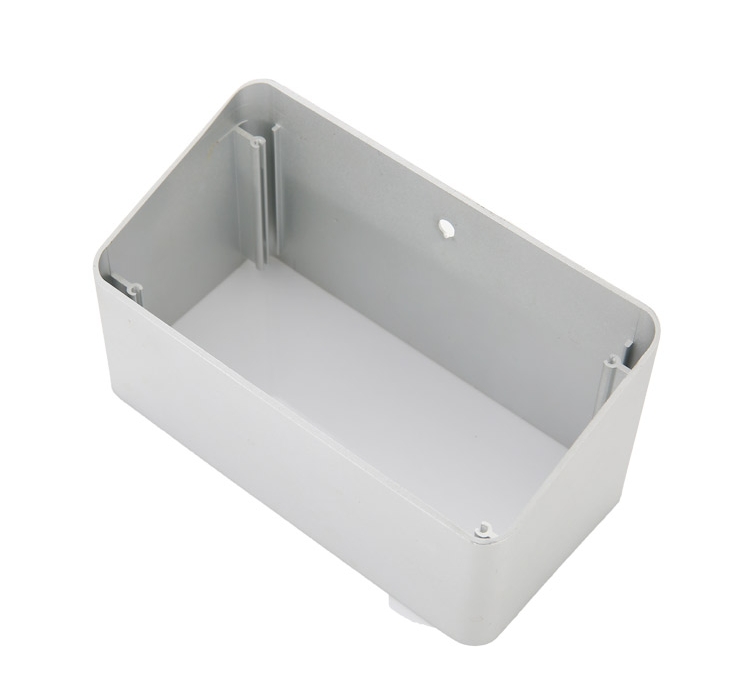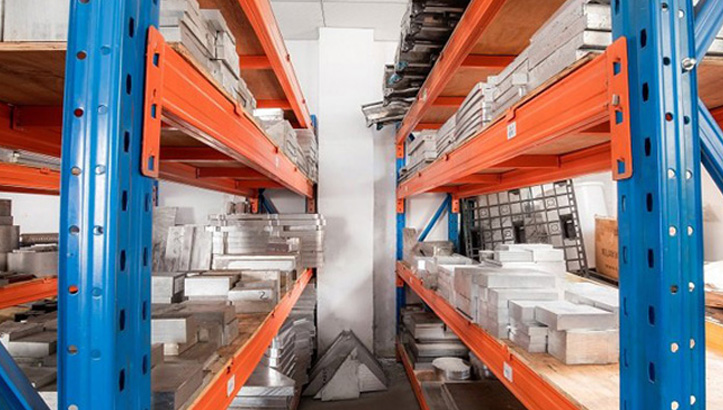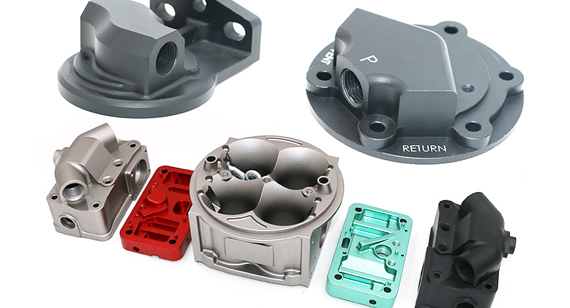Melting Point of Aluminum: CNC Machining Material Guide
When working with aluminum in CNC machining, understanding the melting point is crucial to ensuring the material maintains its integrity. If aluminum reaches its melting point during processing, it could result in deformed parts, compromised strength, and machining defects. Having a clear understanding of the melting point of aluminum ensures precise machining and high-quality parts.
The melting point of aluminum is 660.3°C (1220.5°F). Knowing this temperature helps avoid overheating, which can deform aluminum during machining, and ensures that the correct tools, feeds, and cooling systems are used.
To dive deeper into how the melting point of aluminum affects machining processes, let’s look at the material’s properties in greater detail.
Properties of Aluminum
Aluminum is one of the most versatile and widely used metals in manufacturing, known for its unique combination of properties that make it suitable for a wide range of applications. Some of its key properties include:
1. Low Density:
Aluminum is a lightweight metal with a density of 2.7 g/cm³, roughly one-third the density of steel. This makes it highly desirable in industries where reducing weight is crucial, such as aerospace, automotive, and transportation. By using aluminum, manufacturers can produce strong yet lightweight parts, which contribute to fuel efficiency and enhanced performance.
2. Corrosion Resistance:
One of aluminum’s most important characteristics is its excellent resistance to corrosion. This is due to the formation of a thin, protective oxide layer that naturally develops when aluminum is exposed to oxygen. This oxide layer prevents further oxidation and protects the material from rust and degradation, making aluminum ideal for outdoor environments, marine applications, and products that are exposed to moisture.
3. Thermal and Electrical Conductivity:
Aluminum is an excellent conductor of both heat and electricity. Its thermal conductivity is about three times higher than that of steel, which makes it ideal for heat exchange applications such as heat sinks, radiators, and electrical components. Additionally, aluminum is used in wiring and electrical components, where high electrical conductivity is required. These properties make aluminum a preferred material in electronics, automotive, and power transmission industries.
4. Malleability and Ductility:
Aluminum is highly malleable and ductile, which means it can be easily formed into various shapes without cracking or breaking. This property makes aluminum ideal for applications that require complex shapes, such as aerospace components, automotive body panels, and architectural structures. Additionally, its ability to be extruded, rolled, or stamped into thin sheets enables manufacturers to create parts in virtually any form, making it suitable for a broad range of uses.
5. Non-toxic and Recyclable:
Aluminum is non-toxic, which makes it safe for use in products that come into contact with food, drink, and pharmaceuticals. It is also 100% recyclable without losing its properties, which makes it an environmentally friendly option. The recycling process for aluminum uses only about 5% of the energy required to produce new aluminum, making it a sustainable choice in many industries.
6. Strength-to-Weight Ratio:
Despite its low weight, aluminum has a high strength-to-weight ratio, making it suitable for structural applications where both lightness and strength are required. For example, in aerospace, aluminum alloys are used for aircraft frames, landing gear, and other critical components, as they can withstand the stresses of flight while maintaining a lightweight profile.
These diverse properties make aluminum a material of choice in a wide variety of industries, from aerospace and automotive to electronics and construction. However, to fully exploit its potential, understanding the melting point of aluminum is crucial for ensuring proper processing, especially in CNC machining where precise temperature control is essential for high-quality outputs.
More resources about CNC machining aluminum parts:
Advantages and Applications of CNC Aluminum Housings
How Much Does It Cost to CNC Machining Aluminum Parts?
How To Choose The Right Materials for CNC Machining? -Material Selection Guide
What is the Melting Point of Aluminum?
The melting point of aluminum is 660.3°C. This temperature represents the point where aluminum transitions from solid to liquid. In CNC machining, maintaining a temperature below this threshold is crucial to prevent the material from losing its structural integrity and becoming malleable or deformed.
Unlike other metals like steel, which have much higher melting points, aluminum’s relatively low melting point makes it easier to machine but requires careful control during the process.
More Resources: Melting Point Of Silver: A Comprehensive Guide
What Temperature Does Aluminum Melt?
The melting point of aluminum is 660.3°C (1220.5°F). This temperature is essential when determining the limits for CNC machining and ensures that the machining process doesn’t overheat the material. By controlling the temperature effectively, machinists can prevent defects like warping or melting, leading to high-precision parts.
Melting Points of Different Types of Aluminum
The melting point of aluminum can vary significantly depending on the specific alloy used. Aluminum alloys are composed of aluminum mixed with other elements such as copper, magnesium, manganese, silicon, or zinc, which influence their melting behavior. These variations in melting temperature are critical in applications that require precise temperature control, especially in CNC machining and casting. The alloying elements alter the metal’s hardness, strength, corrosion resistance, and thermal conductivity, as well as its melting temperature.
Below is an table showing the melting points of several common aluminum alloys, with additional details about each series:
| Aluminum Alloy Series | Melting Point (°C) | Key Properties and Common Uses |
|---|---|---|
| 1000 Series | ~660°C | Pure aluminum with high corrosion resistance, excellent workability, and high thermal and electrical conductivity. Commonly used in electrical and chemical industries, as well as in food packaging (e.g., aluminum foil). |
| 2000 Series | ~500-650°C | Contains copper as the primary alloying element, offering high strength but lower corrosion resistance. Typically used in aerospace and military applications where strength is more critical than corrosion resistance. |
| 3000 Series | ~640°C | Contains manganese, offering good corrosion resistance and moderate strength. Commonly used in roofing, siding, and chemical equipment due to its excellent durability. |
| 5000 Series | ~640°C | Magnesium is the primary alloying element, providing high strength, corrosion resistance (especially in marine environments), and good weldability. Used in marine environments, transportation, and architectural applications. |
| 6000 Series | ~650°C | Contains magnesium and silicon, offering a balance between strength, corrosion resistance, and ease of welding. Widely used in construction, transportation, and structural applications. |
| 7000 Series | ~475-635°C | Primarily alloyed with zinc, providing excellent strength and used in high-stress applications like aerospace and sports equipment. The lower melting point compared to other alloys is compensated by its superior strength-to-weight ratio. |
Why is Melting Point Important?
The melting point of aluminum is critical for ensuring optimal machining results. Exceeding this temperature can cause the material to soften, leading to imprecise cuts, deformation, or surface defects. Understanding the melting point allows for proper tool selection and ensures the use of suitable cooling methods to maintain a controlled environment during machining. This knowledge helps prevent overheating, maintains precision, and ensures high-quality outcomes for aluminum parts.
Boiling Point of Aluminum
The boiling point of aluminum is approximately 2470°C, which is notably higher than its melting point. While the melting point is crucial in machining applications, the boiling point holds greater significance in casting processes or situations where aluminum encounters extreme heat.
In standard machining procedures, aluminum retains its solid state, even under high speeds and elevated temperatures, until it reaches its melting point. Consequently, the boiling point is generally not a primary concern for the majority of machining activities.
Melting Points of Common Aluminum Grades
Different aluminum grades are designed for specific applications, and their melting points vary accordingly. Below are the melting points for some of the most commonly used aluminum alloys:
- 6061 Aluminum: Melts at approximately 600-650°C. It is one of the most versatile and widely used alloys in CNC machining. Its moderate melting point allows it to be easily machined, while still providing good strength and corrosion resistance for structural and general-purpose applications.
- 7075 Aluminum: Melts at approximately 475-635°C. Known for its high strength and excellent mechanical properties, this alloy is commonly used in aerospace and military applications. The melting point of 7075 aluminum is lower than 6061, which can make it a bit more challenging to machine but offers superior performance in high-stress environments.
- 2024 Aluminum: Melts at approximately 500-650°C. This alloy is used in applications where high strength is required, such as in aerospace structures. While it has a similar melting range to 6061, 2024 aluminum offers higher strength-to-weight ratios but is less resistant to corrosion.
These melting points are significant when selecting the appropriate aluminum grade for a project, especially when considering factors like machinability, thermal stability, and the specific environmental conditions the final product will endure.
How Prime Aluminum is Produced?
Prime aluminum is generated via the Bayer Process, a method that transforms bauxite ore into aluminum oxide (Al2O3). Following this refinement, the aluminum oxide undergoes electrolysis, resulting in the production of pure aluminum metal. This approach ensures the output of aluminum with exceptionally high purity, contributing to a more uniform melting point.
In comparison, secondary aluminum is derived from recycled materials, which may contain impurities. These impurities can potentially lower the melting point slightly, making this aspect a consideration for specific applications.
Melting Temperature of Aluminum Oxide
The melting temperature of aluminum oxide (Al2O3) significantly exceeds that of aluminum itself, reaching approximately 2050°C. This high melting point renders aluminum oxide particularly suitable for high-temperature applications, including use in abrasives, refractory linings, and ceramics.
Additionally, the elevated melting point of aluminum oxide contributes to its frequent utilization in aluminum smelting processes. It can endure the extreme temperatures inherent in these processes without deteriorating, highlighting its essential role in ensuring efficiency and reliability in industrial applications.
The Relationship Between Melting Point and Other Physical Properties of Aluminum
The melting point of aluminum is linked to several important physical properties that affect machining:
- Thermal Conductivity: A higher melting point generally means better heat resistance, allowing aluminum to dissipate heat more efficiently during machining and reducing the risk of deformation.
- Thermal Expansion: Aluminum expands when heated, and this is influenced by its melting point. Managing thermal expansion is crucial in tight-tolerance machining to avoid dimensional errors.
- Strength and Hardness: Higher-melting-point alloys tend to be stronger and more durable, making them suitable for high-temperature applications such as aerospace or automotive parts.
Measuring and Controlling Aluminum’s Melting Point
When machining aluminum, maintaining the right temperature is crucial to avoid overheating the material and reaching its melting point. Excessive heat can lead to material deformation, loss of precision, and poor surface finish. Therefore, precise temperature control is a key part of ensuring high-quality results and preventing damage to the aluminum. Below are some methods used to monitor and control the temperature during the CNC machining process.
- Temperature Monitoring: In CNC machining, it is essential to track the temperature of the aluminum workpiece to prevent reaching its melting point. Temperature sensors, such as thermocouples and infrared thermometers, are used to measure the temperature in real-time.
- Thermal Imaging Tools: Thermal cameras and imaging tools help detect temperature variations across the aluminum surface. This allows for better monitoring of heat distribution and helps ensure that temperatures remain within the optimal range for machining.
- Cooling Systems: Effective cooling systems are used to regulate the temperature and prevent overheating. Common methods include:
- Coolant Baths: Circulating coolant helps dissipate heat from the workpiece.
- Air Jets: Air cooling systems blow air over the workpiece to maintain temperature control.
- Liquid Nitrogen Cooling: For extreme cooling, liquid nitrogen can be used to rapidly lower the temperature, ensuring it stays below the melting point.
Factors Affecting Aluminum’s Melting Point
The melting point of aluminum can be influenced by several factors that affect its behavior during machining:
1. Alloy Composition:
The melting point of aluminum is heavily influenced by the elements mixed with the base aluminum. For instance, adding copper, magnesium, and silicon can either lower or raise the melting point, depending on the specific alloy. For example, 7075 aluminum, which contains zinc and copper, has a lower melting point compared to pure 1000-series aluminum.
2. Impurities:
The presence of impurities, such as foreign particles or residual chemicals, can alter the aluminum’s melting point. Contaminants typically lower the melting point, which can make machining more challenging by causing the material to soften or deform at lower temperatures than expected.
3. Pressure:
Although in most standard machining operations, pressure does not play a significant role in altering aluminum’s melting point, it does have an effect. Under higher pressures, the melting point of aluminum can increase. However, in typical CNC machining conditions, this factor is usually negligible unless machining at extreme depths or within highly pressurized environments.
Applications of Aluminum’s Melting Point
The melting point of aluminum plays a significant role in various industries, affecting the material’s performance, processing, and application:
1. Aerospace:
Aluminum is widely used in the aerospace industry due to its lightweight and strength-to-weight ratio. The melting point of aluminum allows for ease in machining and forming components, such as aircraft wings and fuselage panels. However, due to the high precision required in aerospace applications, it’s important to manage the temperature carefully during the machining process to avoid issues such as distortion, softening, or surface defects that could compromise the integrity of the components.
2. Automotive:
In the automotive industry, aluminum is used for lightweight components like engine blocks, wheels, and body panels, which contribute to fuel efficiency and overall vehicle performance. The melting point of aluminum must be well-managed during manufacturing processes such as casting, welding, and die-casting to prevent the metal from becoming too soft or deformed. For instance, if the temperature exceeds the melting point during casting, the aluminum parts may not achieve the desired structural integrity and strength.
3. Electronics:
Aluminum is commonly used in the electronics industry for components such as enclosures, heat sinks, and internal parts for devices like smartphones, computers, and power supplies. The melting point ensures that aluminum parts can withstand high operating temperatures without distorting or melting, making it an ideal material for devices that generate heat. Efficient heat dissipation is essential, and aluminum’s ability to maintain structural integrity under high temperatures is crucial for ensuring the longevity and reliability of electronic devices.
Start Your CNC Machining Project at VMT
When starting your CNC machining project at VMT, it’s essential to carefully consider the melting point and choose the appropriate aluminum alloy for your specific requirements. At VMT, we ensure that your parts are crafted with precision by selecting the right material for optimal performance.
By making the right alloy choice, you can avoid potential issues such as material failure or overheating during machining, ensuring the durability and functionality of your components. Let our experienced team guide you through the entire process, from alloy selection to final machining, for high-quality results every time.
In Conclusion
The melting point of aluminum is 660.3°C, and knowing this temperature is essential for controlling machining processes. By selecting the right aluminum alloy and using appropriate tools and cooling systems, manufacturers can ensure precision and high-quality output.
Frequently Asked Questions About Melting Point of Aluminum
Why is Aluminum Difficult to Melt?
Aluminum isn’t particularly difficult to melt (melts at 660°C or 1220°F). However, molten aluminum forms aluminum oxide, which has a much higher melting point of 1930°C. This oxide layer prevents easy melting and must be removed to achieve a clean melt.
What is The Easiest Metal to Melt?
Lead and tin are among the easiest metals to melt due to their low melting points. Lead melts at 327°C (621°F), and tin at 232°C (450°F), making them ideal for simple melting applications.
Does Aluminum Melt at 750 Degrees?
Aluminum melts at 660°C (1220°F), so 750°C (1382°F) is more than sufficient to melt it. The extra temperature provides a safety margin and helps in melting aluminum alloys or removing impurities.
Why is Aluminum’s Melting Point so High?
Aluminum has a relatively high melting point (660°C) due to its strong metallic bonds. The atomic structure requires a significant amount of energy to break the bonds between atoms, which leads to a higher melting temperature compared to lighter metals.
Is Aluminum Hard to Melt?
Aluminum itself is not hard to melt, with a melting point of 660°C. However, the oxide layer that forms on its surface during heating has a higher melting point and can hinder the melting process unless removed.
Why Add Salt When Melting Aluminum?
Salt or flux is added to molten aluminum to prevent oxidation. It forms a protective layer that shields the molten metal from air, reducing the formation of aluminum oxide and ensuring cleaner, more efficient melting.







